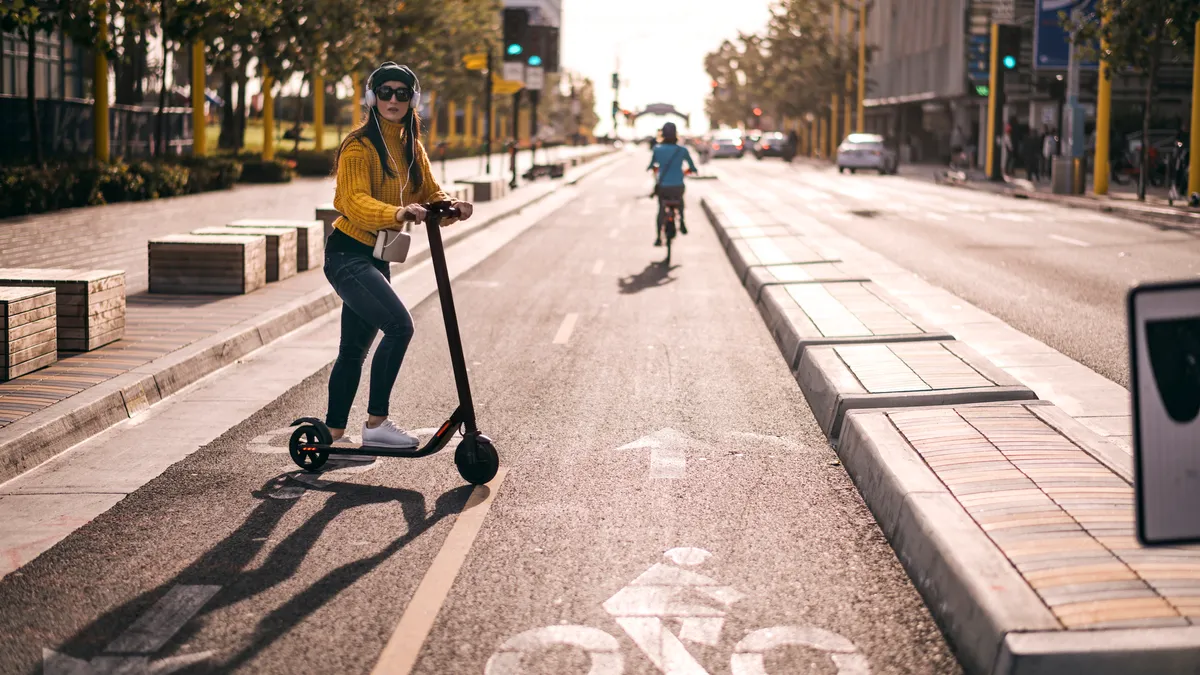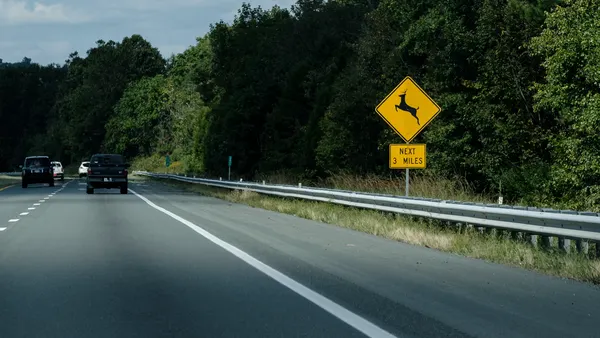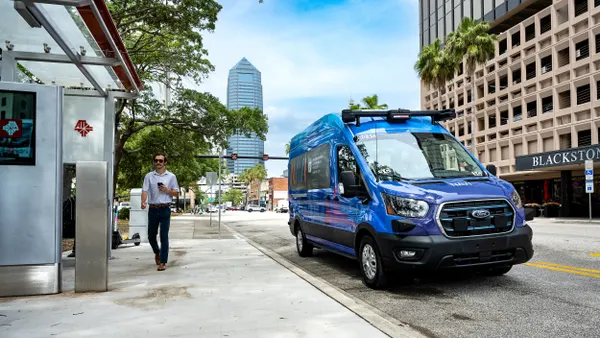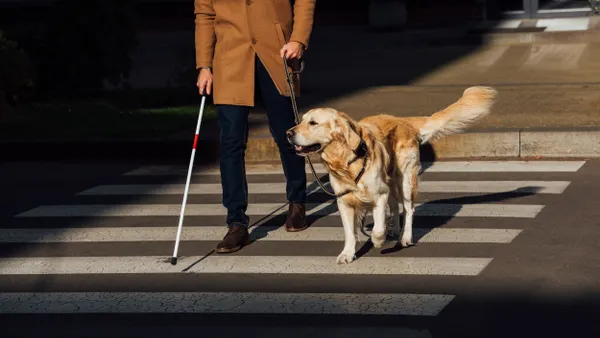Dive Brief:
-
New Mexico state lawmakers are considering a bill requiring municipalities with 10,000 or more residents to install bike lanes with permanent barriers between bikes and cars during municipal roadway improvements.
-
Starting in fiscal year 2024, House Bill 408 would also provide $5 million in general funds annually to help applicable local governments finance protected bike lane construction.
-
During a House Transportation and Public Works Committee meeting on Feb. 28, the bill’s co-sponsor, Rep. Dayan Hochman-Vigil, D, said the legislation aligns with the Complete Streets approach to transportation planning and design, which emphasizes the safety of all road users and has gained momentum in recent years. “It’s really part of a shift in the zeitgeist,” she said.
Dive Insight:
According to the bill, applicable municipalities would need to install bike lanes with permanent physical barriers between bikes and cars during local roadway improvements, such as new road or intersection construction, with some exceptions. Physical barriers include raised curbs, bollards, flexible delineator posts, trees or vegetation, and materials like concrete and granite.
While the committee members at the Feb. 28 meeting broadly supported the bill’s intentions, they wanted to clarify important details, such as which municipalities would be subject to the bill’s provisions. Hochman-Vigil said she would pause the bill until the next legislative session, giving legislators more time to address their concerns.
“We’re just getting started,” she said.
The Complete Streets approach has grown more popular among transportation professionals and public officials as pedestrian and cyclist deaths have risen in recent years. In the bipartisan infrastructure law, Congress mandated that states and metropolitan planning organizations use 2.5% of their planning and research funds for Complete Streets initiatives.
According to the Federal Highway Administration, the law defines Complete Streets policies as those which “ensure the safe and adequate accommodation of all users of the transportation system, including pedestrians, bicyclists, public transportation users, children, older individuals, individuals with disabilities, motorists, and freight vehicles.”
Last year, the FHWA published a plan to encourage state and local governments to adopt Complete Streets policies and design.
The National Highway Traffic Safety Administration estimated in January that roadway crash fatalities of pedestrians increased 2% and fatalities of cyclists increased 8% during the first nine months of 2022 compared with that period in 2021, despite a slight decline in traffic deaths overall. Likewise, a recent report by the Governors Highway Safety Association found that roadway crash-related pedestrian deaths climbed 5% during the first half of 2022 compared with that period the previous year.
According to Smart Growth America, governments in 37 states, Puerto Rico and Washington, D.C., have produced more than 1,700 Complete Streets policies in the U.S.











